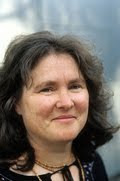By now PSSC students should be reading their assigned novel or non-fiction book. If not, I'm sure your teachers will be organising it by the end of the month. With so much work to do in PSSC it really is important to read your set book as soon as possible. Even a few pages a night is better than nothing at all. Once you are through the first three chapters it's good to pause and make a few notes about the central character. Getting to know the main characters, their motivations and relationships with other characters is vital.
Later in the year when you sit the exam, if you choose to write a literature essay on your set novel, you will seem a fool if you cannot fully describe the main character. By this I don't mean, short/tall, dark/fair, fat/thin. This is only appearance. You must be able to describe the main character's personality and how this has a bearing on his relationships to others.
 |
| Nigerian village. Source: visualrian.com |
For instance Okonkwo, in Chinua Achebe's Things Fall Apart, is a proud, strong warrior who follows his tribe's traditions fiercely. He 'ruled his household with a heavy hand' (TFA, p.9). He was a man who feared failure and weakness, things he associated with his father. Okonkwo hated everything his father had loved, such as gentleness and idleness. (TFA, p10.) If Okonkwo's children or wives were lazy he would punish them.
From these few details and quotes we can understand Okonkwo's basic character, what he thinks of his father and what motivates him to be such a hard-working, custom-driven man.
Pick out short quotes and the page number and write them in your diary. Just flicking through the first few chapters is enough. During the exam you will be expected to produce quotes with page numbers so keeping them short and simple is best. When you are under pressure in an exam it's too hard trying to remember long complicated quotes.








